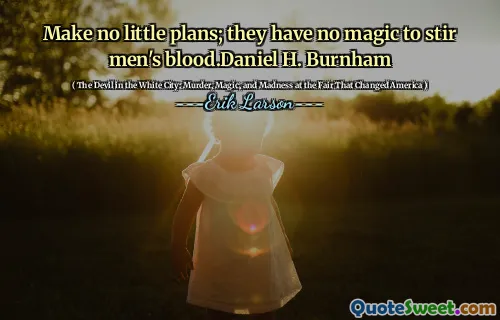These were men, wrote Lincoln Steffens, who will not have an office unless it is up where the air is cool and fresh, the outlook broad and beautiful, and where there is silence in the heart of business.
In Erik Larson's book "The Devil in the White City," he explores the contrasts between the grandeur of the 1893 World's Fair in Chicago and the darker elements of the city at that time. The narrative intertwines the stories of visionary architects and the nefarious activities of a serial killer, creating a vivid depiction of ambition and horror. Through these contrasting tales, Larson highlights the complexity of American society during a transformative period.
Lincoln Steffens describes a group of men driven by ideals that reflect their desire for excellence and integrity. They seek environments that inspire creativity and elevate their work, aiming to create a lasting impact. This sentiment underscores the broader themes of progress and morality in Larson's narrative, emphasizing how the beauty and brilliance of human achievement can coexist with corruption and tragedy.






